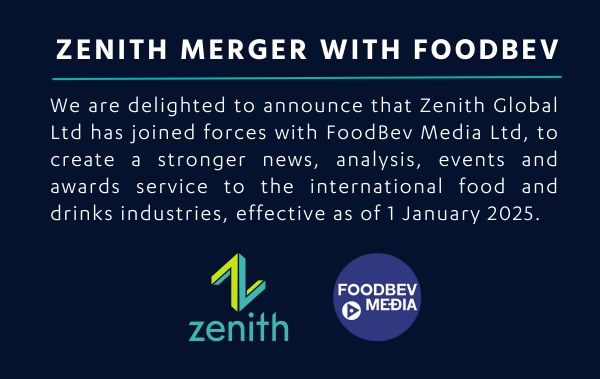India – the biggest gets bigger
First published in Dairy Innovation Magazine
The growth of the Indian economy is impressive by any measure. The 9% GDP growth achieved in 2010 (currently forcast at above 8.5% for 2011), is predicted by Finance Minister Dr. Pranab Mukherjee, to rise to 10% shortly this will place it ahead of China as the worlds fastest growing economy with a retail market growing at 25% annually. Of the BRIC countries, in the world of Food and Beverage, India is likely to offer the greatest potential for growth over the next 20 years. According to UN projections the adult population in India will increase by a 240 millions over the next two decades, compared with 20 m in Brazil. The adult population of Russia, by contrast, will decline sharply by almost 20 m and China’s will peak in 2015 and then gradually decline. By 2030, India is forecast to overtaken China as the world’s most populous country. In addition the rate of urbanisation in India is predicted by the UN to be maintained at above 2.4% until 2030 with China’s rate of urbanisation falling to 1.2% in the same period. At the same time, the OECD estimate that, over the next 30 years that, using the World Banks definition, the ‘middle classes’ in India will expand, from below 10% of the population currently, to over 90%. As a result The food and beverage sector is already seeing dramatic impacts Coke cola, for example, reported a 22% increase in sales across India in the second quarter 2010. The Asian Bottled Water Association report that he Indian bottled water market is currently growing at 60% per year. India is worlds biggest producer of milk with annual production of 111.11 m tonnes which in 2009/10 contributed around 8% of the country’s GDP. The current growth in dairy production of 3.19%, surprisingly continued through the drought of 2009, but is according to the India Dairy Association, still around 3% lower than the growth in demand forcing up prices and sucking in imports. In the past two years, milk prices have risen from Rs 17 a litre to Rs 27 a litre. While the percentage growth of products is not as high as in such countries as Brazil and China the size of the market makes the total volume growth bigger. However, despite the growth in demand India in the past a big importer of milk and dairy products. The aim, and the need, in the coming decades is clearly to expand production to meet the increased need of the urbanised middle classes. Growing and intensification of the dairy sector may be problematic. Much of the current production, around 55%, is buffalo milk (India produces over 90% of the worlds supply from Buffalos), and the majority of milk is produced in the informal sector by small holders and landless labourers who are grouped into village co-operatives at village level (in 2007 the NSSO in India reported that 69% of milk was produced on farmers of less than 2Ha). The market itself is also complex. To provide them a steady market and a reasonable price for the milk produced, about 13.90 million farmers are brought under the ambit of 133349 village level cooperative societies. Operation Flood, a programme initiated by National Dairy Development Board in 1970, was the previous major initiative to develop India’s Dairy Industry from stagnation to success and operated until 1998. Indeed, Operation Flood led to the growth of dairy industry in India, and helped India become the world’s largest milk producer. To build on the success of Operation Flood, and to take the dairy cooperative movement further, the Government of India, through the National Dairy Development Board(NDDB) has now approved a new National Dairy plan, “Perspective 2010”. Perspective 2010 is a plan, to be funded by a soft lone from the World Bank, which will have an outlay of more than Rs. 17,300 crore ($3,650 million) to achieve a target of 180 million tonnes of milk production annually by 2021-22 across the 14 key dairying states. Milk production is expected to grow at 4% giving an annual incremental output of 5 million tonnes in the next 15 years. The NDDP plan envisages that the project will do everything from increasing cattle and buffalo productivity, to expanding coverage of milk producers, procurement and processing through four ‘thrust’ areas, ‘Quality Assurance’, ‘Productivity Enhancement’, ‘Institution Building’ and providing a ‘National Information Network’. By the end of the operation 65% of the milk should pass through the formal sector compared to 30% now. To cope with the additional processing in the formal sector the plan will expand milk processing capacity by an additional 60 million kg per day, expand drying capacity by an additional 1200 metric tonnes per day, and refurbish existing processing capacity with an outlay estimated at about US $ 2300 million. In the first phase ‘Perspective 2010’ will focus on the six key dairying states; Gujarat, Punjab, Karnataka, Uttar Pradesh, Bihar, and Maharashtra. Currently these states are amending their co-operative law to meet the demands of the project. The NDDB has set up a new organisation, “NDDB Dairy Services” with its headquarters in New Delhi to implement the plan. The new body is headed by the impressive figure of Ms Sangeeta Talwar as Managing Director, previously of Tata Tea and Nestle, and famed for spearheading the celebrated ‘Jaago Re’ campaign which was aimed at developing young peoples views on issues like voting and corruption, she will be responsible for all aspects of Perspective 2010’s role out and the formation of implementation bodies within the states. Although India is striving to maintain its self sufficiency the continued population growth, urbanisation and growth of the middle classes leads to the conclusion that India will become a major target for exporters in future years and that it must become an attractive target for inward investment developing the formal milk sector and serving the newly well off population.
Comments(0)